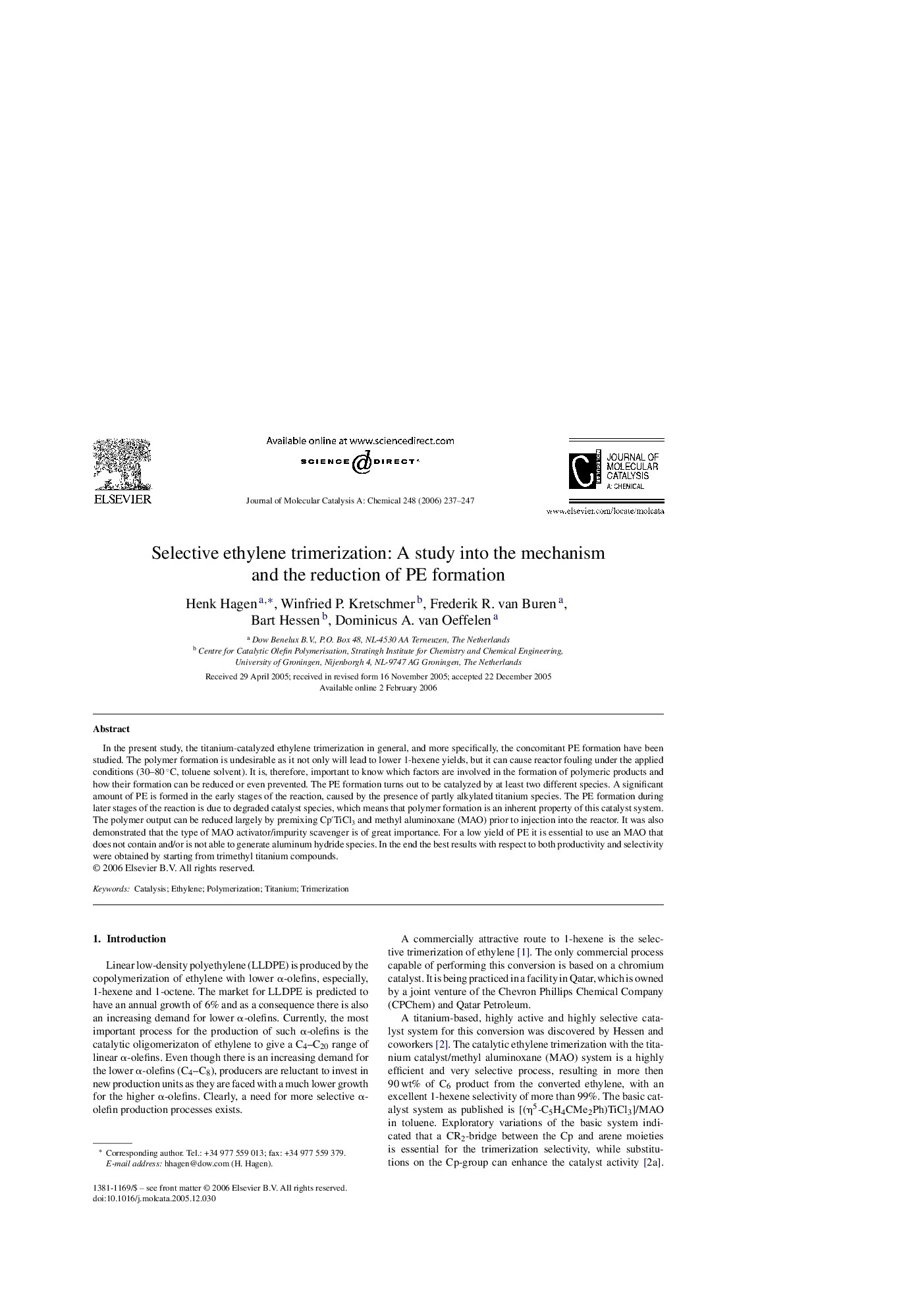| کد مقاله | کد نشریه | سال انتشار | مقاله انگلیسی | نسخه تمام متن |
|---|---|---|---|---|
| 69203 | 48532 | 2006 | 11 صفحه PDF | دانلود رایگان |

In the present study, the titanium-catalyzed ethylene trimerization in general, and more specifically, the concomitant PE formation have been studied. The polymer formation is undesirable as it not only will lead to lower 1-hexene yields, but it can cause reactor fouling under the applied conditions (30–80 °C, toluene solvent). It is, therefore, important to know which factors are involved in the formation of polymeric products and how their formation can be reduced or even prevented. The PE formation turns out to be catalyzed by at least two different species. A significant amount of PE is formed in the early stages of the reaction, caused by the presence of partly alkylated titanium species. The PE formation during later stages of the reaction is due to degraded catalyst species, which means that polymer formation is an inherent property of this catalyst system. The polymer output can be reduced largely by premixing Cp′TiCl3 and methyl aluminoxane (MAO) prior to injection into the reactor. It was also demonstrated that the type of MAO activator/impurity scavenger is of great importance. For a low yield of PE it is essential to use an MAO that does not contain and/or is not able to generate aluminum hydride species. In the end the best results with respect to both productivity and selectivity were obtained by starting from trimethyl titanium compounds.
The influence of catalyst activation on productivity and 1-hexene versus PE selectivity of titanium-based trimerization catalysts was studied. It was found that both could be improved largely by preactivation of the Cp′TiCl3 catalyst in the absence of ethylene. The best results were achieved by using Cp′TiMe3 catalysts. Figure optionsDownload as PowerPoint slide
Journal: Journal of Molecular Catalysis A: Chemical - Volume 248, Issues 1–2, 3 April 2006, Pages 237–247